Profiles of notable books written by Communication scholars

Gender Equality and Work-Life Balance
Sarah Blithe
Routledge, 2015
Gender Equality and Work-Life Balance describes the work-life practices of men in the United States. The purpose is to increase gender equality at work for all employees. With a focus on leave policy inequalities, this book argues that men experience a phenomenon called "the glass handcuffs," which prevents them from leaving work to participate fully in their families, homes, and other life events, highlighting the cultural, institutional, organizational, and occupational conditions which make gender equality in work-life policy usage difficult. This social justice book ultimately draws conclusions about how to minimize inequalities at work.
This book is the winner of the 2017 NCA Organizational Communication Division’s Book of the Year Award.
Sarah Blithe is Associate Professor of Communication Studies at the University of Nevada, Reno. Her research interests focus on the role that discourse and communication play in shaping our social identities and organizational policies.

How Postmodernism Explains Football and Football Explains Postmodernism: The Billy Clyde Conundrum
Robert Kerr
Palgrave Macmillan, 2015
American football and postmodernist theory are both objects of popular and scholarly interest that reveal remarkable sociological insights. Analysis of media-driven commercial football documents how narratives of sportsmanship/brutality, heroism/antiheroism, athleticism/self-indulgence, honor/chicanery, and chivalry/sexism compete and thrive.
This book is the winner of the 2017 NCA Communication & Sport Division's Outstanding Book Award.
Robert Kerr is Edith Kinney Gaylord Presidential Professor at Gaylord College, University of Oklahoma, where he focuses on the First Amendment, free speech, and related legal and public-policy issues.

Risky Rhetoric: AIDS and the Cultural Practices of HIV Testing
J. Blake Scott
Southern Illinois University Press, 2003
Risky Rhetoric: AIDS and the Cultural Practices of HIV Testing is the first book-length study of the rhetoric inherent in and surrounding HIV testing. In addition to providing a history of HIV testing in the United States from 1985 to the present, J. Blake Scott explains how faulty arguments about testing’s power and effects have promoted unresponsive and even dangerous testing practices for so-called healthy subjects as well as those deemed risky. A new afterword to the paperback edition discusses changes in testing technology, treatments, and public health responses in the last ten years. The ultimate goal of Risky Rhetoric is to offer strategies to policy makers, HIV educators and test counselors, and other rhetors for developing more responsive and egalitarian testing-related rhetorics and practices.
This book is the winner of the 2017 NCA Health Communication Division's Distinguished Book Award.
J. Blake Scott is a Professor of Rhetoric at the University of Central Florida, where his research focuses on the rhetoric of health and medicine.

Health Communication & Breast Cancer Among Black Women: Culture, Identity, Spirituality, and Strength
Annette D. Madlock Gatison
Lexington Books, 2016
This book addresses how the discourse of strength constructs the identity of Black women even during times of chronic illness through the lens of Black feminist thought and womanist ideology. In doing so, Madlock Gatison explores how the narratives surrounding pink ribbon awareness and survivorship culture, religion and spirituality, and the myth of the strong Black woman impact Black female breast cancer survivors’ self-perceptions, views others had of them, and their ability to express their needs and concerns including those involving their healthcare. This book will be of interest to scholars of public health, health communication, and sociology.
This book is the winner of the 2016 NCA African American Communication & Culture Division’s Outstanding Book Award.
Annette D. Madlock Gatison is an adjunct instructor in the Department of Communication Studies at the University of Minnesota.

Networked Publics and Digital Contention: The Politics of Everyday Life in Tunisia
Mohamed Zayani
Oxford University Press, 2015
How is the adoption of digital media in the Arab world affecting the relationship between the state and its subjects? What new forms of online engagement and strategies of resistance have emerged from the aspirations of digitally empowered citizens in the Middle East and North Africa? Networked Publics and Digital Contention narrates the story of the co-evolution of technology and society in Tunisia, the birthplace of the Arab uprisings. It explores the emergence of a digital culture of contention that helped networked publics negotiate their lived reality, reconfigure power relations, and ultimately redefine the locus of politics. It broadens the focus from narrow debates about the role that social media played in the Arab uprisings toward a fresh understanding of how changes in media affect the state-society relationship over time. Based on extensive fieldwork, in-depth interviews with Internet activists, and immersive analyses of online communication, this book draws our attention away from the tools of political communication and refocuses it on the politics of communication. An original contribution to the political sociology of media, Networked Publics and Digital Contention provides a unique perspective on how networked Arab publics reimagine citizenship, reinvent politics, and produce change.
This book is the winner of the 2017 NCA Applied Communication Divisoin’s Sue DeWine Distinguished Scholarly Book Award.
Mohamed Zayani is Associate Professor of Critical Theory at the Georgetown University School of Foreign Service in Qatar and Director of the Media and Politics Program. His works include The Al Jazeera Phenomenon: Critical Perspectives on New Arab Media and The Culture of Al Jazeera: Inside an Arab Media Giant.

Levinas’s Rhetorical Demand
Ronald C. Arnett
Southern Illinois University Press, 2017
Philosopher Emmanuel Levinas’s ethics as first philosophy explicates a human obligation and responsibility to and for the Other that is an unending and imperfect commitment. In Levinas’s Rhetorical Demand: The Unending Obligation of Communication Ethics, Ronald C. Arnett underscores the profundity of Levinas’s insights for communication ethics.
Arnett outlines communication ethics as a primordial call of responsibility central to Levinas’s writing and mission, analyzing it through a Levinasian lens with examination of social artifacts ranging from the Heidegger-Cassirer debate to Rupert Murdoch’s News of the World story concerning illicit possession of information.
Levinas’s Rhetorical Demand offers an account of Levinas’s project and the pragmatic implications of attending to a call of responsibility to and for the Other. This book yields a rich and nuanced understanding of Levinas’s work, revealing the practical importance of his insights, and including a discussion of related theorists and thinkers.
This book is the winner of the 2017 NCA Communication Ethics Division’s Top Single-Author Book of the Year Award, and the 2017 NCA Philosophy of Communication Division’s Distinguished Book Award.
Ronald C. Arnett is the chair of and a professor in the Department of Communication & Rhetorical Studies at Duquesne University and the Patricia Doherty Yoder and Ronald Wolfe Endowed Chair in Communication Ethics. He is the author or coauthor of eleven books, including Communication Ethics in Dark Times: Hannah Arendt’s Rhetoric of Warning and Hope, which received the 2013 Top Book Award from the Communication Ethics Division of the National Communication Association, and Dialogic Confession: Bonhoeffer’s Rhetoric of Responsibility, which received the 2006 Everett Lee Hunt Award from the Eastern Communication Association. He is also a 2017 NCA Distinguished Scholar.

The Public Image
Robert Hariman and John Louis Lucaites
The University of Chicago Press, 2016
Even as the media environment has changed dramatically in recent years, one thing at least remains true: photographs are everywhere. From professional news photos to smartphone selfies, images have become part of the fabric of modern life. And that may be the problem. Even as photography bears witness, it provokes anxieties about fraudulent representation; even as it evokes compassion, it prompts anxieties about excessive exposure. Parents and pundits alike worry about the unprecedented media saturation that transforms society into an image world. And yet a great news photo can still stop us in our tracks, and the ever-expanding photographic archive documents an era of continuous change.
By confronting these conflicted reactions to photography, Robert Hariman and John Louis Lucaites make the case for a fundamental shift in understanding photography and public culture. In place of suspicions about the medium’s capacity for distraction, deception, and manipulation, they suggest how it can provide resources for democratic communication and thoughtful reflection about contemporary social problems.
This book was the recipient of the 2017 NCA Visual Communication Division’s Diane Hope Book of the Year Award, the 2017 NCA Public Address Division’s Marie Hochmuth Nichols Award, and the Carl Couch Center’s Bruce E. Gronbeck Political Research Award.
Robert Hariman is a Professor in Northwestern University’s School of Communication. His scholarship focuses on the role of public art and artistry in human affairs, particularly with regard to political judgment and the discursive constitution of modern society.
John Louis Lucaites is a Professor of Rhetoric and Public Culture at Indiana University. His research conerns the general relationship between rhetoric and social/political theory, with focuses on the role of photojournalism as a mode of “public art,” and the relationship between race and U.S. social and political identity.

Gendered Asylum
Sara L. McKinnon
University of Illinois Press, 2016
Women filing gender-based asylum claims long faced skepticism and outright rejection within the United States immigration system. Despite erratic progress, the United States still fails to recognize gender as an established category for experiencing persecution. Gender exists in a sort of limbo segregated from other aspects of identity and experience.
Sara L. McKinnon exposes racialized rhetorics of violence in politics and charts the development of gender as a category in American asylum law. Starting with the late 1980s, when gender-based requests first emerged in case law, McKinnon analyzes gender- and sexuality-related cases against the backdrop of national and transnational politics. Her focus falls on cases as diverse as Guatemalan and Salvadoran women sexually abused during the Dirty Wars and transgender asylum seekers from around the world fleeing brutally violent situations. She reviews the claims, evidence, testimony, and message strategies that unfolded in these legal arguments and decisions, and illuminates how legal decisions turned gender into a political construct vulnerable to American national and global interests. She also explores myriad related aspects of the process, including how subjects are racialized and the effects of that racialization, and the consequences of policies that position gender as a signifier for women via normative assumptions about sex and heterosexuality.
Wide-ranging and rich with human detail, Gendered Asylum uses feminist, immigration, and legal studies to engage one of the hotly debated issues of our time.
This book is the winner of the 2017 Bonnie Ritter Outstanding Feminist Book Award, NCA Feminist & Women Studies Division.
Sara L. McKinnon is an associate professor of rhetoric, politics, and culture in the Department of Communication Arts and affiliate faculty in global studies and gender and women's studies at the University of Wisconsin–Madison. She is also the author of Text + Field: Innovations in Rhetorical Method (Penn State Press).

The Naked Blogger of Cairo
Marwan M. Kraidy
Harvard University Press, 2016
Uprisings spread like wildfire across the Arab world from 2010 to 2012, fueled by a desire for popular sovereignty. In Tunisia, Egypt, Syria, and elsewhere, protesters flooded the streets and the media, voicing dissent through slogans, graffiti, puppetry, videos, and satire that called for the overthrow of dictators and the regimes that sustained them.
Investigating what drives people to risk everything to express themselves in rebellious art, The Naked Blogger of Cairo uncovers the creative insurgency at the heart of the Arab uprisings. While commentators have stressed the role of social media, Marwan M. Kraidy shows that the essential medium of political expression was not cell phone texts or Twitter but something more fundamental: the human body. Brutal governments that coerced citizens through torture and rape found themselves confronted with the bodies of protesters, burning with defiance and boldly violating taboos. Activists challenged authority in brazen acts of self-immolation, nude activism, and hunger strikes. The bodies of dictators became a focus of ridicule. A Web series presented Syria’s Bashar al-Assad as a pathetic finger puppet, while cartoons and videos spread a meme of Egypt’s Hosni Mubarak as a regurgitating cow.
The rise of digital culture complicates our understanding of the human body in revolutionary times. As Kraidy argues, technology publicizes defiance, but the body remains the vital nexus of physical struggle and digital communication, destabilizing distinctions between “the real world” and virtual reality, spurring revolutionary debates about the role of art, and anchoring Islamic State’s attempted hijacking of creative insurgency.
This book is the winner of the 2017 Roderick P. Hart Outstanding Book Award in NCA’s Political Communication Division.
Marwan M. Kraidy is Marwan M. Kraidy is Professor of Communication, the Anthony Shadid Chair in Global Media, Politics and Culture, and the Founding Director of the Center for Advanced Research in Global Communication (CARGC) at the Annenberg School for Communication, University of Pennsylvania, where he is also affiliated with the Middle East Center. A scholar of global communication and an authority on Arab media, politics and culture, he studies the relationship between culture and geopolitics, theories of identity and modernity, and global media systems and industries. Kraidy is currently an Andrew Carnegie Fellow.

U.S. Media and Migration: Refugee Oral Histories
Sarah C. Bishop
Routledge, 2016
Using oral history, ethnography, and close readings of media, Sarah C. Bishop probes the myriad and sometimes conflicting ways refugees interpret and use mediated representations of life in the United States. Guided by 74 refugee narrators from Bhutan, Burma, Iraq, and Somalia, U.S. Media and Migration explores answers to questions such as: What does one learn from media about an unfamiliar place? How does media help or hinder refugees' sense of belonging after relocation? And how does the U.S. government use media to shape refugees' understanding of American norms, standards, and ideals? With insights from refugees and resettlement administrators throughout, Bishop provides a compelling and layered analysis of the interaction between refugees and U.S. media before, during, and long after resettlement.
This book is the winner of the 2017 Outstanding Book Award from the NCA International and Intercultural Communication Division, and the 2017 Sue DeWine Book Award from the NCA Applied Communication Division.
Sarah C. Bishop is an Assistant Professor in the Department of Communication Studies at Baruch College, City University of New York. Bishop’s research considers the interaction of media and migration. Much of her published work pertains to the ways immigrants, refugees, and sojourners use and are portrayed in media throughout intercultural transitions. At Baruch, Bishop teaches a range of undergraduate and graduate courses in Intercultural Communication, Privilege and Difference, and Digital Media Culture.

Engaging Theories in Interpersonal Communication, 2nd Ed.
Edited by Dawn O. Braithwaite and Paul Schrodt
Sage Publishing, 2014
Engaging Theories in Interpersonal Communication: Multiple Perspectives highlights key theories used to guide interpersonal communication research. The Second Edition features 30 theory chapters written by leading scholars in interpersonal communication, including new coverage of evolutionary theories, Problematic Integration Theory, supportive communication theories, Theory of Motivated Information Management, critical approaches to interpersonal communication, and Media Multiplexity Theory. Each theory chapter follows the same structure to help readers easily find and compare information across theories. An updated introductory chapter maps the history and the current state of interpersonal communication theory since publication of the first edition, based on comprehensive analysis of published scholarship. Presenting both classic and cutting-edge issues, the book organizes theories into three clusters—theories that are individually-centered; theories that are focused on discourse and interaction processes; and theories that examine how communication functions in personal relationships. All authors interweave abstract theoretical concepts with concrete examples in order to maximize readability and comprehension.
This book is the winner of the 2017 NCA Gerald R. Miller Book Award.
Dawn O. Braithwaite, Willa Cather professor and department chair at the University of Nebraska-Lincoln, studies how people in personal and family relationships communicate and manage family change and challenges. Her research centers on communication in understudied and changing families, communication rituals, and dialectics of relating in stepfamilies and among voluntary (fictive) kin. She is a past president of NCA.
Paul Schrodt is Professor and Director of Graduate Studies, Communication Studies, at Texas Christian University. His work focuses on family communication and interpersonal communication, communicative cognitions and behaviors that facilitate family relationships, and message strategies and behaviors that facilitate stepfamily functioning.

Prison Power
Lisa M. Corrigan
University Press of Mississippi, 2016
In the black liberation movement, imprisonment emerged as a key rhetorical, theoretical, and media resource. Imprisoned activists developed tactics and ideology to counter white supremacy. Lisa M. Corrigan underscores how imprisonment--a site for both political and personal transformation--shaped movement leaders by influencing their political analysis and organizational strategies. Prison became the critical space for the transformation from civil rights to Black Power, especially as southern civil rights activists faced setbacks.
Black Power activists produced autobiographical writings, essays, and letters about and from prison beginning with the early sit-in movement. Examining the iconic prison autobiographies of H. Rap Brown, Mumia Abu-Jamal, and Assata Shakur, Corrigan conducts rhetorical analyses of these extremely popular though understudied accounts of the Black Power movement. She introduces the notion of the “Black Power vernacular” as a term for the prison memoirists’ rhetorical innovations, to explain how the movement adapted to an increasingly hostile environment in both the Johnson and Nixon administrations.
Through prison writings, these activists deployed narrative features supporting certain tenets of Black Power, pride in blackness, disavowal of nonviolence, identification with the Third World, and identity strategies focused on black masculinity. Corrigan fills gaps between Black Power historiography and prison studies by scrutinizing the rhetorical forms and strategies of the Black Power ideology that arose from prison politics. These discourses demonstrate how Black Power activism shifted its tactics to regenerate, even after the FBI sought to disrupt, discredit, and destroy the movement.
Prison Power is one of the winners of the 2017 NCA Diamond Anniversary Book Award.
Lisa Corrigan is an Associate Professor of Communication, Director of the Gender Studies Program, and Affiliate Faculty in both African & African American Studies and Latin American Studies in the Fulbright College of Arts and Sciences at the University of Arkansas. She is a feminist rhetorical scholar who researches and teaches in the areas of social movement studies, the Black Power and civil rights movement, prison studies, feminist studies, the Cold War, and the history of public address.

Urban Renewal and Resistance: Race, Space, and the City in the Late Twentieth to the Early Twenty-First Century
Mary E. Triece
Lexington Books, 2016
Mary Triece’s book examines how urban spaces are rhetorically constructed through discourses that variously justify or resist processes of urban growth and renewal. This book combines insights from critical geography, urban studies, and communication to explore how urban spaces, like Detroit and Harlem, are rhetorically structured through neoliberal discourses that mask the racialized nature of housing and health in American cities. The analysis focuses on city planning documents, web sites, media accounts, and draws on insights from personal interviews in order to pull together a story of city growth and its consequences, while keeping an eye on the ways city residents continue to confront and resist control over their communities through counter-narratives that challenge geographies of injustice. Recommended for scholars of communication studies, journalism, sociology, geography, and political science.
Urban Renewal and Resistance is one of the winners of the 2017 NCA Diamond Anniversary Book Award.
Mary E. Triece is a professor in the School of Communication at the University of Akron. Her research focuses on women's protest rhetoric of the twentieth century. In 2008, Triece's book, On the Picket Line, won the Bonnie Ritter Award. She is a three-time recipient of the University of Akron Summer Faculty Fellowship. In March 2010, Triece was the Roseanne L. Hoefel Women’s Studies Scholar-in-Residence at Alma College in Alma, Michigan. Triece has twice been named a Favorite Faculty by the University of Akron's National Residence Hall.

Abstinence Cinema
Casey Ryan Kelly
Rutgers University Press, 2016
From the perspective of cultural conservatives, Hollywood movies are cesspools of vice, exposing impressionable viewers to pernicious sexually-permissive messages. Offering a groundbreaking study of Hollywood films produced since 2000, Abstinence Cinema comes to a very different conclusion, finding echoes of the evangelical movement’s abstinence-only rhetoric in everything from Easy A to Taken.
Casey Ryan Kelly tracks the surprising sex-negative turn that Hollywood films have taken, associating premarital sex with shame and degradation, while romanticizing traditional nuclear families, courtship rituals, and gender roles. As he demonstrates, these movies are particularly disempowering for young women, concocting plots in which the decision to refrain from sex until marriage is the young woman’s primary source of agency and arbiter of moral worth. Locating these regressive sexual politics not only in expected sites, like the Twilight films, but surprising ones, like the raunchy comedies of Judd Apatow, Kelly makes a compelling case that Hollywood films have taken a significant step backward in recent years.
Abstinence Cinema offers close readings of movies from a wide spectrum of genres, and it puts these films into conversation with rhetoric that has emerged in other arenas of American culture. Challenging assumptions that we are living in a more liberated era, the book sounds a warning bell about the powerful cultural forces that seek to demonize sexuality and curtail female sexual agency.
Reviewer and Communication scholar Bonnie J. Dow says, “Smart textual analysis and informed feminist critique make Abstinence Cinema a welcome addition to scholarship that takes popular culture seriously for its participation in the struggles of contemporary public life."
Abstinence Cinema won the NCA 2016 Diane Hope Book of the Year Award, Visual Communication Division.
Casey Ryan Kelly is an associate professor of critical communication and media studies at Butler University, in Indianapolis, Indiana. His research has appeared in journals such as the Quarterly Journal of Speech, Text and Performance Quarterly, Communication and Critical/Cultural Studies, Rhetoric Society Quarterly, Critical Studies in Media Communication, and Communication, Culture and Critique, among others. Kelly’s scholarship focuses on critical rhetorics of race, gender, and masculinity in the U.S., and his next book project, tentatively titled Apocalypse Man: Toxic Masculinity and the Rhetoric of Doomsday Prepping, examines the recent mainstreaming of survivalist discourse - television, films, prepper conventions, news, manifestos - in US public culture and how its violent ethos of male warriorism stokes fantasies of the end times.

Watching Women’s Liberation 1970
Bonnie J. Dow
University of Illinois Press, 2016
In 1970, ABC, CBS, and NBC -- the “Big Three” of the pre-cable television era -- discovered the feminist movement. From the famed sit-in at Ladies’ Home Journal to multi-part feature stories on the movement's ideas and leaders, nightly news broadcasts covered feminism more than in any year before or since, bringing women's liberation into American homes.
In Watching Women's Liberation, 1970: Feminism's Pivotal Year on the Network News, Bonnie J. Dow uses case studies of key media events to delve into the ways national TV news mediated the emergence of feminism's second wave. First legitimized as a big story by print media, the feminist movement gained broadcast attention as the networks’ eagerness to get in on the action was accompanied by feminists’ efforts to use national media for their own purposes. Dow chronicles the conditions that precipitated feminism's new visibility and analyzes the verbal and visual strategies of broadcast news discourses that tried to make sense of the movement.
Groundbreaking and packed with detail, Watching Women's Liberation, 1970 shows how feminism went mainstream--and what it gained and lost on the way.
Watching Women’s Liberation received the NCA 2016 Outstanding Feminist Book Award, Feminist & Women’s Studies Division.
Bonnie J. Dow is the College of Arts and Sciences divisional dean of humanities, professor and chair of communication studies, and professor of women's and gender studies at Vanderbilt University. She is the also the author of Prime-Time Feminism: Television, Media Culture, and the Women's Movement Since 1970. Dow’s research interests include the rhetoric and representation of the first and second waves of feminism in the United States. She is currently serving as NCA’s Publications Board Director.

Reclaiming Queer: Activist and Academic Rhetorics of Resistance
Erin J. Rand
University of Alabama Press, 2014
Reclaiming Queer is an examination of the rhetorical linkage of queer theory in the academy with street-level queer activism in the 1980s and early 1990s. In Reclaiming Queer, Erin J. Rand examines both queer activist and academic practices during this period, taking as her primary object the rhetorical linkage of queer theory in the academy with street-level queer activism. Through this strategic conjuncture of activism and academia, Rand grapples with the specific conditions for and constraints on rhetorical agency in each context. She examines the early texts that inaugurated the field of queer theory, Queer Nation’s infamous “Queers Read This” manifesto, Larry Kramer’s polemic speeches and editorials, the Lesbian Avengers’ humorous and outrageous antics, the history of ACT UP, and the more recent appearance of Gay Shame activism. From these activist and academic discourses, Rand builds a theory of rhetorical agency that posits queerness as the very condition from which agency emerges.
Reclaiming Queer thus offers a critical look at the rhetoric of queer activism, engages the history of queer theory’s institutionalization and the politics of its proliferation, suggests a radically contextual understanding of rhetorical agency and form, and argues for the centrality of queerness to all rhetorical action.
Reclaiming Queer was winner of the NCA 2015 Book of the Year Award, Critical and Cultural Studies division.
Erin J. Rand is an associate professor of communication and rhetorical studies and affiliated with LGBT Studies at Syracuse University. Her research focuses on resistance and rhetorical agency in activist and social movement discourses. Her work has appeared in the Quarterly Journal of Speech, Rhetoric and Public Affairs, Communication and Critical/Cultural Studies, the Western Journal of Communication, and Women’s Studies in Communication.

Sex Museums: The Politics and Performance of Display
Jennifer Tyburczy
University of Chicago Press, 2015
In Sex Museums, Jennifer Tyburczy takes a hard look at the formation of Western sexuality—particularly how categories of sexual normalcy and perversity are formed—and asks what role museums have played in using display as a technique for disciplining sexuality. Most museum exhibits, she argues, assume that white, patriarchal heterosexuality and traditional structures of intimacy, gender, and race represent national sexual culture for their visitors. Sex Museums illuminates the history of such heteronormativity at most museums and proposes alternative approaches for the future of public display projects, while also offering the reader curatorial tactics—what she calls queer curatorship—for exhibiting diverse sexualities in the twenty-first century.
Reviewer Susan Stryker, director of the Institute for LGBT Studies at the University of Arizona, says of the book: “Tyburczy’s Sex Museums hits the sweet hot spot between sexuality studies and museum studies to offer a smart analysis of the politics of the erotic in the public sphere.”
Sex Museums was the winner of the 2016 NCA GLBTQ Studies Division Book of the Year Award, and is a 2017 Lambda Literary Awards winner (LGBT Studies).
Jennifer Tyburczy is Assistant Professor of Feminist Studies at the University of California, Santa Barbara. Her research focuses on the display of visual, popular, and material culture in museums and the global flow of sexual objects across mapped and symbolic borders, particularly throughout North America, Latin America, and Western Europe. In addition to her work as a teacher and a writer, Tyburczy is also a performance artist and a curator.
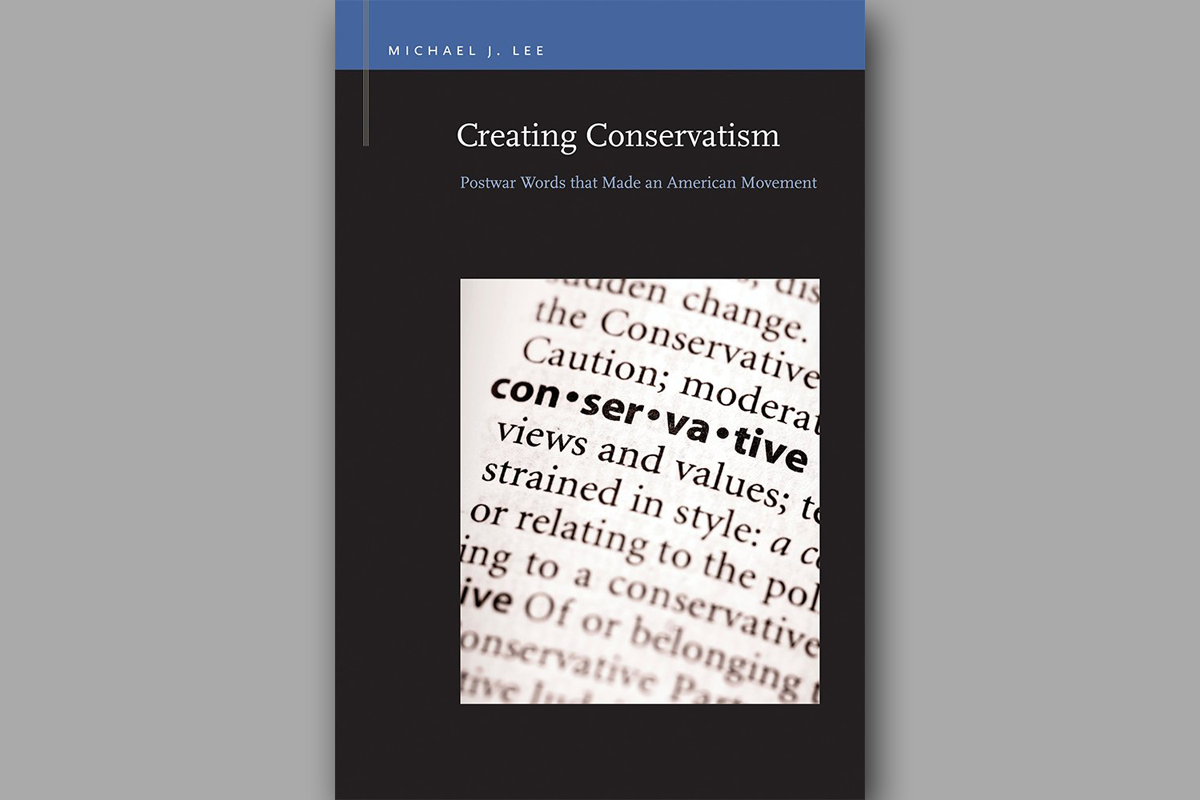
Creating Conservatism: Postwar Words That Made an American Movement
Michael J. Lee
Michigan State University Press, 2014
Creating Conservatism charts the vital role of canonical post–World War II (1945–1964) books in generating, guiding, and sustaining conservatism as a political force in the United States. Dedicated conservatives have argued for decades that the conservative movement was a product of print, rather than a march, a protest, or a pivotal moment of persecution. Taking an expansive approach, the author documents the wide influence of the conservative canon on traditionalist and libertarian conservatives. By exploring the varied uses to which each founding text has been put from the Cold War to the culture wars, Creating Conservatism generates original insights about the struggle over what it means to think and speak conservatively in America.
In a review for American Studies Journal, Seth J. Bartee writes, “Michael J. Lee has written one of the most important books about the creation of the conservative movement in the United States to date. Creating Conservatism is a work that seeks to understand conservatism from the perspective of the canonical texts that defined it.”
Creating Conservatism received the 2015 NCA Diamond Anniversary Book Award, the NCA Winans-Wichelns Award, the 2015 Kohrs-Campbell Prize in Rhetorical Criticism, and the 2015 Bruce E. Gronbeck Political Communication Research Award.
Michael J. Lee is an Associate Professor at the College of Charleston, where he teaches and researches in the areas of rhetoric and political communication. His essays have been published in such journals as the Quarterly Journal of Speech, Rhetoric & Public Affairs, Feminist Media Studies, and the Journal of Applied Communication Research. Mike has also given frequent media interviews on a number of political topics.
- Michigan State University Press
- MIT Comparative Media Studies Podcast: “The Conservative Canon Before and After Trump”
- Medium post: “Trump, Race, and the Meaning of Conservatism”

Of Remixology
David J. Gunkel
Remix—or the practice of recombining preexisting content—has proliferated across media both digital and analog. Fans celebrate it as a revolutionary new creative practice; critics characterize it as a lazy and cheap (and often illegal) recycling of other people’s work. In Of Remixology, David Gunkel argues that to understand remix, we need to change the terms of the debate. The two sides of the remix controversy, Gunkel contends, share certain underlying values—originality, innovation, artistic integrity. And each side seeks to protect these values from the threat that is represented by the other. In reevaluating these shared philosophical assumptions, Gunkel not only provides a new way to understand remix, he also offers an innovative theory of moral and aesthetic value for the twenty-first century.
Of Remixology received the NCA Communication Ethics Division’s 2016 Top Single-Author Book of the Year Award.
David J. Gunkel is Distinguished Teaching Professor and Professor of Communication Technology at Northern Illinois University. He is the author of Hacking Cyberspace, Thinking Otherwise: Philosophy, Communication, Technology and Of Remixology: Ethics and Aesthetics After Remix (MIT Press).
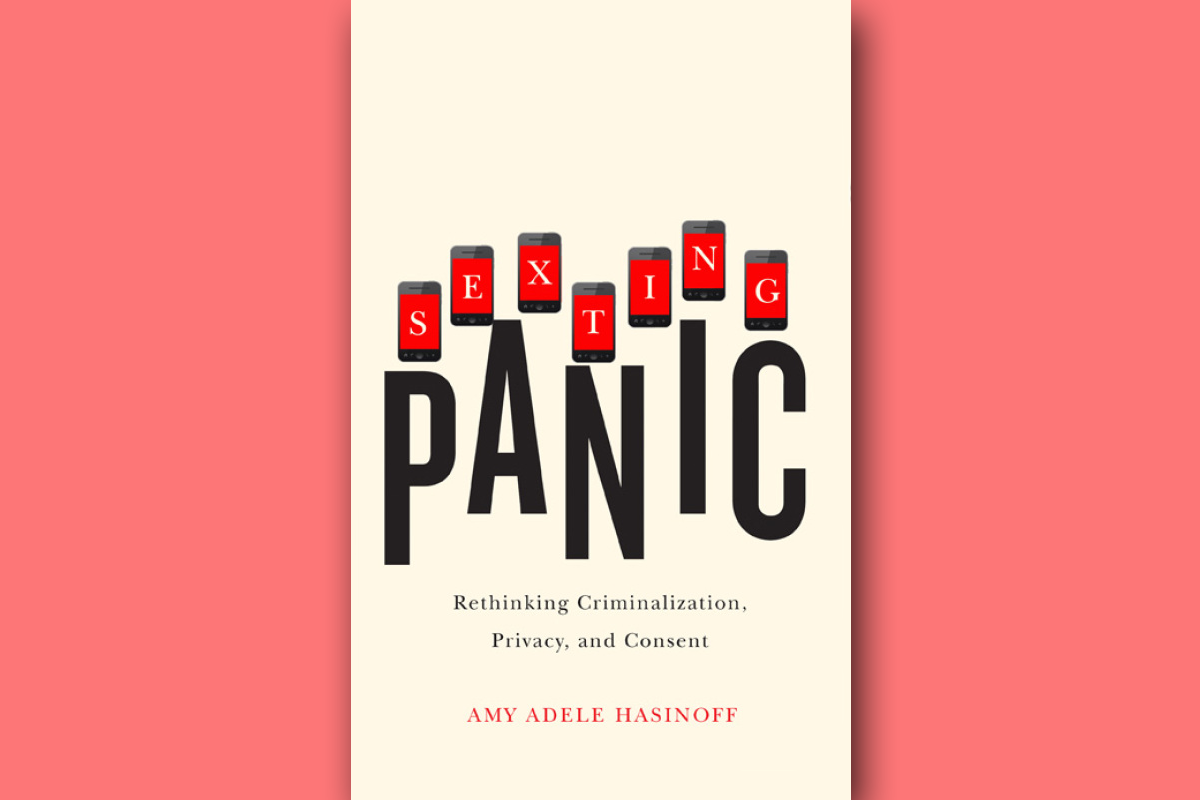
Sexting Panic: Rethinking Criminalization, Privacy, and Consent
Amy Adele Hasinoff
University of Illinois Press, 2015
Sexting Panic illustrates that anxieties about technology and teen girls' sexuality distract from critical questions about how to adapt norms of privacy and consent for new media. Though mobile phones can be used to cause harm, Amy Adele Hasinoff notes that the criminalization and abstinence policies meant to curb sexting often fail to account for distinctions between consensual sharing and malicious distribution. Challenging the idea that sexting inevitably victimizes young women, Hasinoff argues for recognizing young people's capacity for choice and encourages rethinking the assumption that everything digital is public. Timely and engaging, Sexting Panic analyzes the debates about sexting while recommending realistic and nuanced responses.
In a review for Journal of Communication, Stephanie Patrick writes, "In an age of heightened concern over rape culture and sexualization in the media, Amy Adele Hasinoff's (2015) Sexting Panic is one of the most insightful, concise, and necessary works to emerge in recent feminist media studies.”
Sexting Panic received the 2016 NCA Diamond Anniversary Book Award.
Amy Hasinoff is Assistant Professor in the College of Liberal Arts and Sciences at the University of Colorado-Denver, where she conducts research and teaches in new media and media studies with an emphasis on gender and sexuality. Her work appears in Communication and Critical Cultural Studies, New Media & Society, Critical Studies in Media Communication, and Feminist Media Studies. Sexting Panic examines the construction of sexting as a social problem and the responses to it in mass media, law, and education.

Making Photography Matter: A Viewer’s History from the Civil War to the Great Depression
Cara A. Finnegan
University of Illinois Press, 2015
Photography became a dominant medium in cultural life starting in the late nineteenth century. As it happened, viewers increasingly used their reactions to photographs to comment on and debate public issues as vital as war, national identity, and citizenship. Finnegan analyzes a wealth of newspaper and magazine articles, letters to the editor, trial testimony, books, and speeches produced by viewers in response to specific photos they encountered in public. From the portrait of a young Lincoln to images of child laborers and Depression-era hardship, Finnegan treats the photograph as a locus for viewer engagement and constructs a history of photography's viewers that shows how Americans used words about images to participate in the politics of their day. As she shows, encounters with photography helped viewers negotiate the emergent anxieties and crises of U.S. public life through not only persuasion but action as well.
Photography became a dominant medium in cultural life starting in the late nineteenth century. As it happened, viewers increasingly used their reactions to photographs to comment on and debate public issues as vital as war, national identity, and citizenship. Finnegan analyzes a wealth of newspaper and magazine articles, letters to the editor, trial testimony, books, and speeches produced by viewers in response to specific photos they encountered in public. From the portrait of a young Lincoln to images of child laborers and Depression-era hardship, Finnegan treats the photograph as a locus for viewer engagement and constructs a history of photography's viewers that shows how Americans used words about images to participate in the politics of their day. As she shows, encounters with photography helped viewers negotiate the emergent anxieties and crises of U.S. public life through not only persuasion but action as well.
"Finnegan's work offers an important addition to a growing body of scholarship on the impact of reading photography as a means of understanding the state of the nation."-- American Historical Review
Making Photography Matter received the 2016 NCA James A. Winans and Herbert A. Wilchens Memorial Award for Distinguished Scholarship in Rhetoric and Public Address, and the 2015 Outstanding Book of the Year Award from the NCA Visual Communication Division.
Cara Finnegan is Professor in the Department of Communication at the University of Illinois. She holds affiliated appointments in the Center for Writing Studies, Gender and Women's Studies, and Art History, and a Conrad Humanities Professorship in the College of Liberal Arts and Sciences. Finnegan's research examines the role of photography as a tool for public life. Her book-length projects are best described as rhetorical histories of photography, in that she variously examines the production, composition, circulation, and reception of photographs at specific moments in U.S. history. Finnegan currently holds a National Endowment for the Humanities (NEH) Fellowship in support of her book project, American Presidents and the History of Photography from the Daguerreotype to the Digital Age.
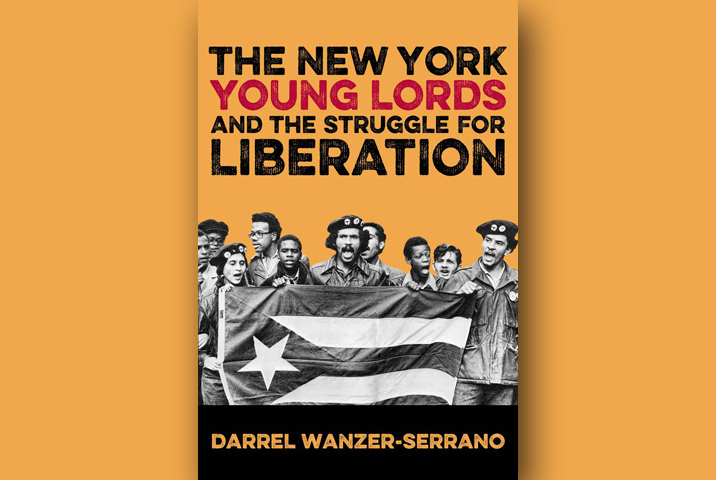
The New York Young Lords and the Struggle for Liberation
Darrel Wanzer-Serrano
Philadelphia: Temple University Press, 2015
The Young Lords was a multi-ethnic, though primarily Nuyorican, liberation organization that formed in El Barrio (Spanish Harlem) in July of 1969. Responding to oppressive approaches to the health, educational, and political needs of the Puerto Rican community, the movement’s revolutionary activism included organized protests and sit-ins targeting such concerns as trash pickups and lead paint hazards. The Young Lords advanced a 13-point political program that demanded community control of their institutions and land and challenged the exercise of power by the state and outsider-run institutions.
In his "landmark history" of this movement, Darrel Wanzer-Serrano details the numerous community initiatives that advanced decolonial sensibilities in El Barrio and beyond. In The New York Young Lords and the Struggle for Liberation, Wanzer-Serrano crafts an account of the Young Lords’ discourse and activism from archival research and interviews. He rescues the organization from historical obscurity and makes an argument for its continued relevance, enriching and informing contemporary discussions about Latino/a politics. As Wanzer-Serrano notes on the Temple University Press Blog (North Philly Notes). "I craft a critical-interpretive history of the Young Lords to help introduce them to a broader audience. Beyond the historical point, the book is also an effort to enrich our understandings of decolonial praxis and its potentials. Decolonial theory —especially as engaged by scholars from Latin American and Latin@ contexts — has evolved well over the last couple of decades. I believe it can be pushed further via engagement of particulars, of the grounded ways in which people and groups seek to delink from modernity/coloniality in their lived environments."
Calling The New York Young Lords "thoroughly documented" and "well-contextualized," Lehman College's Andres Torres notes that Wanzer-Serrano "draws from oral histories and memoirs to argue that the Young Lords, at their best, represented a creative and principled effort at uplifting society’s marginalized peoples. The writing attains eloquence and innovatively situates the Young Lords’ experience in recent social movements literature."

The Material Gene: Gender, Race, and Heredity after the Human Genome Project
Kelly E. Happe
New York: NYU Press, 2013
In 2000, the National Human Genome Research Institute announced the completion of a “draft” of the human genome, the sequence information of nearly all 3 billion base pairs of DNA. Since then, interest in the hereditary basis of disease has increased considerably.
In The Material Gene, Kelly E. Happe considers the broad implications of this development by treating “heredity” as both a scientific and political concept. Beginning with the argument that eugenics was an ideological project that recast the problems of industrialization as pathologies of gender, race, and class, the book traces the legacy of this ideology in contemporary practices of genomics. Delving into the discrete and often obscure epistemologies and discursive practices of genomic scientists, Happe maps the ways in which the hereditarian body, one that is also normatively gendered and racialized, is the new site whereby economic injustice, environmental pollution, racism, and sexism are implicitly reinterpreted as pathologies of genes and by, extension, the bodies they inhabit. Comparing genomic approaches to medicine and public health with discourses of epidemiology, social movements, and humanistic theories of the body and society, The Material Gene reworks our common assumption of what might count as effective, just, and socially transformative notions of health and disease.
Writing in New Genetics and Society, Jorg Niewohner writes that "social inquiry has been concerned with the consequences of renewed vigor and depth with which biological knowledge has been shaping life itself." With this book, Niewohner concludes, Happe "carries forward this important set of concerns." Happe's book is "ground-breaking" says Julie Guthman in Society and Space; it is "wonderful to think with," and Happe makes a "significant contribution to the evolving literature on race, gender, biopolitics, and bioscience."
The Material Gene received the 2014 Diamond Anniversary Book Award from the National Communication Association as "the most outstanding scholarly book published during the previous two years."
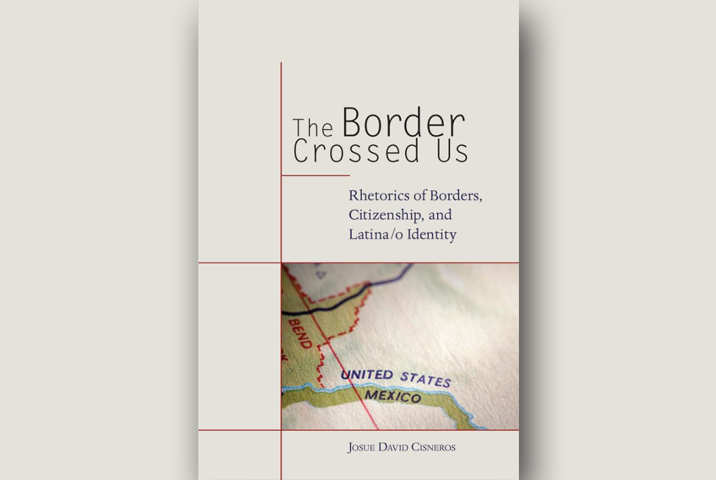
The Border Crossed Us: Rhetorics of Borders, Citizenship, and Latino/a Identity
Josue David Cisneros
Tuscaloosa: University of Alabama Press, 2014
The Border Crossed Us explores efforts to restrict and expand notions of U.S. citizenship as they relate specifically to the U.S.-Mexico border and Latina/o identity.
Borders and citizenship go hand in hand. Borders define a nation as a territorial entity and create the parameters for national belonging. But the relationship between borders and citizenship breeds perpetual anxiety over the purported sanctity of the border, the security of a nation, and the integrity of civic identity.
In The Border Crossed Us, Josue David Cisneros addresses these themes as they relate to the U.S.-Mexico border, arguing that issues ranging from the Mexican-American War of 1846–1848 to contemporary debates about Latina/o immigration and border security are negotiated rhetorically through public discourse. He explores these rhetorical battles through case studies of specific Latina/o struggles for civil rights and citizenship, including debates about Mexican American citizenship in the 1849 California Constitutional Convention, 1960s Chicana/o civil rights movements, and modern-day immigrant activism.
Cisneros posits that borders—both geographic and civic—have crossed and recrossed Latina/o communities throughout history (the book’s title derives from the popular activist chant, “We didn’t cross the border; the border crossed us!”) and that Latina/os in the United States have long contributed to, struggled with, and sought to cross or challenge the borders of belonging, including race, culture, language, and gender.
The Border Crossed Us illuminates the enduring significance and evolution of U.S. borders and citizenship, and provides programmatic and theoretical suggestions for the continued study of these critical issues. Writing about Cisneros's work, Darrel Wanzer-Serrano notes that “The Border Crossed Usmakes a unique and significant contribution to rhetorical studies and Latina/o studies by advancing an inclusive theoretical focus on the border and the intersections between rhetoric, borders, belonging, and Latinidad. The specific case studies provide a welcome breadth of textual material that will appeal to Latina/o rhetorical and communication scholars from myriad methodological orientations.”

On the Frontier of Science: An American Rhetoric of Exploration and Exploitation
Leah Ceccarelli
East Lansing: Michigan State University Press, 2013
“The frontier of science” is a metaphor that has become ubiquitous in American rhetoric, from its first appearance in the public address of early 20th century American intellectuals and politicians who aligned a mythic national identity with scientific research, to its more recent use in scientists’ arguments in favor of increased research funding.
In On the Frontier of Science: An American Rhetoric of Exploration and Exploitation, Leah Ceccarelli explores what is selected and what is deflected when this metaphor is deployed, its effects on those who use it, and what rhetorical moves are made by those who try to counter its appeal. In her research, Ceccarelli discovers that “the frontier of science” evokes a scientist who is typically male, a risk taker, an adventurous loner—someone separated from a public that both envies and distrusts him, with a manifest destiny to penetrate the unknown. It conjures a competitive desire to claim the riches of a new territory before others can do the same. Closely reading the public address of scientists and politicians and the reception of their audiences, this book shows how the frontier of science metaphor constrains American speakers, helping to guide the ends of scientific research in particular ways and sometimes blocking scientists from attaining the very goals they set out to achieve.
Calling Ceccarelli's book "an outstanding model of what the next generation of rhetorical criticism can contribute to society," the University of Georgia's Celeste Condit credits Ceccarelli with creating "a broad and deep understanding of the variegated potentials of this metaphor and [using] that understanding to offer alternatives for the rhetorical construction of the futures of science in the context of globalization.” Carolyn Miller says thatOn the Frontier of Science "shows us why the rhetorical nature of science matters, and how it works." For Miller, this study "is characteristically purposeful, meticulous, and lucid, with careful attention to the burden of proof [Ceccarelli] bears for a multidisciplinary readership in public address, rhetoric of science, and science studies.”
Repeatedly calling On the Frontier of Science "fascinating," Catherine Newell, writing in Science, notes that "One of the book's most powerful lessons is the possibility that the frontier metaphor creates a culture of science that 'sees science as a contest for territory' rather than a global and collaborative effort."
Leah Ceccarelli is Professor and Associate Chair in the Department of Communication at the University of Washington. Her research focuses on interdisciplinary and public discourse about science. She also explores metacritical issues surrounding rhetorical inquiry as a mode of research. She teaches undergraduate and graduate courses in American Public Address, Public Debate, Rhetorical Criticism, Classical Rhetoric, and Rhetoric of Science. She helps coordinate Washington's Science Studies Network. She serves on the editorial boards of Rhetoric & Public Affairs and Philosophy & Rhetoric, is Vice Chair of the Public Address Division of the National Communication Association, serves on the Publications Committee of the Western States Communication Association, and is Co-Editor of Transdisciplinary Rhetoric (a book series sponsored by the Rhetoric Society of America and Penn State University Press).
- Michigan State University Press
- Inaugural Lecture Series presentation, University of Washington, Department of Communication
- Association for the Rhetoric of Science & Technology, Oral History Project
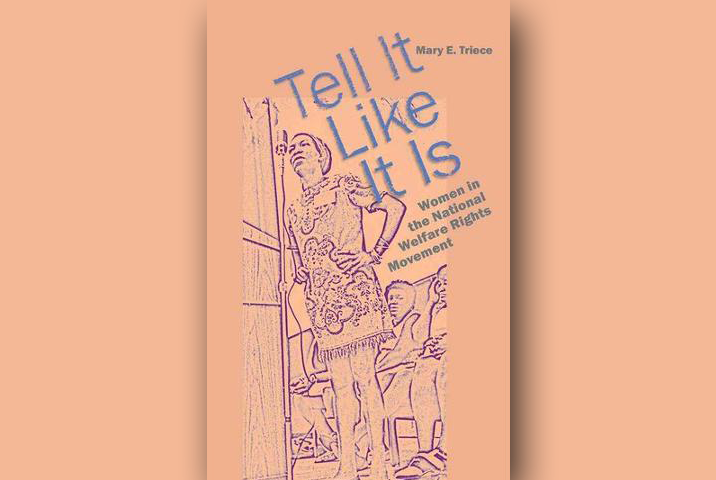
Tell It Like It Is: Women in the National Welfare Reform Movement
Mary E. Triece
Columbia: University of South Carolina Press, 2013
In Tell It Like It Is, Mary E. Triece brings to light a lesser known yet influential social movement of the late 1960s and early 1970s—the welfare rights movement, led and run largely by poor black mothers in the National Welfare Rights Organization (NWRO). Her study combines theory and critical analysis to explore rhetorical strategies and direct actions women employed as they argued for fair welfare legislation both in formal policy debates and in the streets. Triece focuses on how welfare recipients spoke for themselves in forums often marked by widely held stereotypes.
Triece explains the influence of racism on welfare legislation throughout the early 1900s and explores how welfare recipients cultivated agency while challenging stereotypes such as the "welfare cheat" and the "welfare mother." To illuminate her study, Triece uses historical documents including pamphlets, flyers, position statements, and convention materials. She examines The Welfare Fighter, the official newspaper of the NWRO, and draws on the congressional testimonies of welfare recipients, providing the first in-depth look at the ways that these women represented themselves in this formal political forum.
Tell It Like It Is presents an interdisciplinary study touching on communication, rhetoric, politics, feminist theory, and the intersections of race, class, gender, and sexuality. It also engages in ongoing scholarly debate regarding language, knowledge, reality, and the potential for social change. Triece contributes to each of these disciplines as she explores how a marginalized and beleaguered people managed to mobilize a nationwide movement. Political scientist and Gender Studies scholar Laura Woliver remarks that Tell It Like It Is "fills in those large gaps in our knowledge about how even very poor, stigmatized, marginalized, and beleaguered people often do 'talk back' ... and dissent from the complacent status quo to 'set society straight.'" Reference and Research Book News calls Triece's book an "interdisciplinary study" that "integrates ideas from feminist theory, politics, communication, race studies, and social change. On a theoretical level, the book engages in ontological and epistemological debates regarding language, knowledge, and truth, emphasizing the relevance of lived experience for making claims to knowing."
Mary E. Triece is Professor in the School of Communication at the University of Akron. She is the author ofProtest and Popular Culture: Women in the U.S. Labor Movement, 1894–1917 and On the Picket Line: Strategies of Working-Class Women during the Depression, which received the Bonnie Ritter Book Award. Triece has also published in Critical Studies in Mass Communication, Rhetoric Society Quarterly, Communication Studies,Women's Studies in Communication, and the Western Journal of Communication.

Anonymous Agencies, Backstreet Businesses, and Covert Collectives: Rethinking Organizations in the 21st Century
Craig R. Scott
Palo Alto, CA: Stanford University Press, 2013
Many organizations and their members devote extensive resources to promoting themselves and being known to others. However, not all organizations want or need their identity to be recognized, and not all organizational members want to have their membership or affiliation known by at least certain audiences. As we consider secret societies, anonymous support programs, hate groups, terrorist cells, covert military units, organized crime, gangs, parts of the underground economy, front organizations, stigmatized businesses, and even certain hidden enterprises tucked away in quiet office parks, we have to question what we think we know about the identity goals of organizations and their members.
Craig Scott's book, Anonymous Agencies, Backstreet Businesses, and Covert Collectives, offers a framework for thinking about how a wide range of organizations and their members communicate their identity to relevant audiences. Considering the degree to which organizations strategically make themselves visible, the extent to which members express their identification with the organization, and whether the relevant audience is more mass/public or local, we can describe various “regions” in which these collectives reside—ranging from transparent and shaded to more shadowed and dark. Importantly, organizations operating in these spaces differ in how they and their members communicate identity to others. Taking a closer look at groups like EarthFirst!, the Church of Scientology, Alcoholics Anonymous, the KKK, Skull and Bones, U.S. special mission units, men's bathhouses, and various terrorist organizations, this book draws attention to shaded, shadowed, and dark collectives as important organizations in the contemporary landscape.
"Drawing on his life-long interest in opaque organizations," Brigham Young University's Paul Godfrey notes, "Craig Scott combines the best of academic research and engaging writing to provide a rich, thoughtful, and thought-provoking examination of 'hidden' organizations. His topic is both timely and timeless, as backstreet businesses promise to become increasingly important in our world." Tracy Russo of the University of Kansas concludes that "Scott's engaging examination of hidden organizations makes a vivid argument that established ideas about organizations and their public communication do not apply uniformly. This is an important contribution demonstrating to organizational communication students and researchers that there's more to the organizational landscape than meets the eye."
Craig R. Scott is Professor in the Department of Communication at Rutgers, The State University of New Jersey. His research examines anonymity and identification in organizations and related communication contexts. More specifically, he is interested in hidden organizations, organizational communication, communication technologies in the workplace, issues of work-related identification, anonymous communication, and communication theory. Scott is the past director of the Ph.D. program in Communication at Rutgers, a member of the advisory board for Rutgers's Communication and Interaction Lab, and an affiliate with Rutgers's Center for Media Studies.

Exhibiting Patriotism: Creating and Contesting Interpretations of American Historic Sites
Teresa Bergman
Walnut Creek, CA: Left Coast Press, 2013
Recipient of the Jane Jacobs Urban Communication Book Award
In Exhibiting Patriotism, Teresa Bergman analyzes exhibits, interpretive materials, and orientation films at major U.S. sites, from Mt. Rushmore to the USS Arizona Memorial, where controversy has erupted over the stories they tell about the past. She shows how historic narratives are the result of dynamic relationships between institutions and the public, and how these relationships are changing in an era when museums are becoming more visitor-centered, seeing visitors as partners in historical interpretation. Drawing on film theory, memory studies, visual communication, and visitor studies, Bergman offers an important analysis for scholars and professionals in American studies, museum studies, public history, and communication and media studies.
Noted documentary film scholar Bill Nichols says of Exhibiting Patriotism: "Our national monuments, and the onsite films that frame our understanding of them, receive well-deserved scrutiny in Teresa Bergman's book. The sometimes strained efforts to acknowledge multiple constituencies and unrepresented minorities reveal how the Lincoln Memorial, Mt. Rushmore and other treasures possess chameleon-like identities that continue to evolve."
Teresa Bergman is Associate Professor in the Communication Department at the University of the Pacific in Stockton, California, and a former documentary filmmaker. She earned her B.A. at the University of California, Berkeley, her M.A. at San Francisco State University, and her Ph.D. at the University of California, Davis. She teaches courses in documentary film criticism and production as well as critical theory and qualitative research methods. Her research focus is on the intersection of location, memory, and representation at sites of public memory.
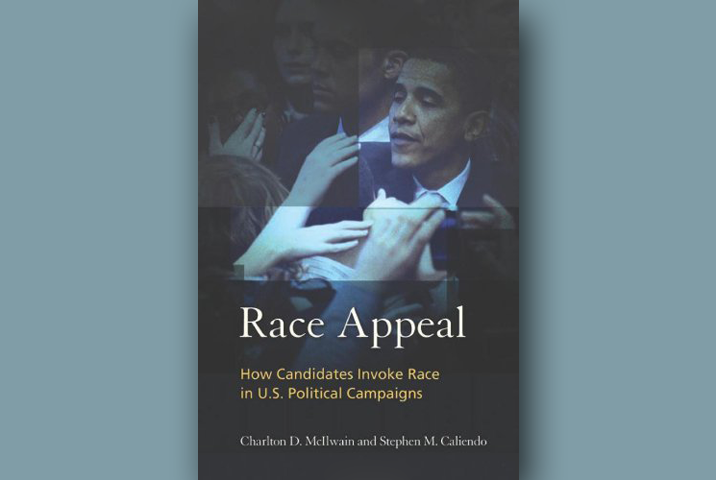
Race Appeal: How Candidates Invoke Race in U.S. Political Campaigns
Charlton McIlwain & Stephen M. Caliendo
Philadelphia, PA: Temple University Press, 2011
In our evolving American political culture, whites and blacks continue to respond very differently to race-based messages and the candidates who use them. Race Appeal examines the use and influence of such appeals on voters in elections for federal office in which one candidate is a member of a minority group.
Charlton McIlwain and Stephen Caliendo use various analysis methods to examine candidates who play the race card in political advertisements. They offer a compelling analysis of the construction of verbal and visual racial appeals and how the news media covers campaigns involving candidates of color. Combining rigorous analyses with in-depth case studies—including an examination of race-based appeals in the historic 2008 presidential election—Race Appeal is a groundbreaking work that represents the most extensive and thorough treatment of race-based appeals in American political campaigns to date.
The University of Michigan's Robin Mean Coleman calls Race Appeal "well-researched [and] intellectually sophisticated." "It is an exhaustive study," Coleman notes, "that covers the full range of what might be considered race in the U.S. political campaign process." Michael Tesler, writing in Political Communication, concludes that Race Appeal "makes a significant contribution to the racial politics literature by shedding much needed light on the nature of the racialized communications environment encountered by candidates of color and showing that race is still a major issue in their campaigns—a contribution that will surely become even more important as the demographic composition of candidates for elected office changes in the decades ahead."
Race Appeal received the 2012 Ralph Bunche Award from the American Political Science Association, given to the best book published in the United States during the previous calendar year that explores the phenomenon of ethnic and cultural pluralism. In its citation, the APSA Award committee noted that the book "is not only a groundbreaking work that represents the most extensive and thorough treatment of race-based appeals in American political campaigns to date, but also an outstanding example of multi-disciplinary work that integrates research and theory across the fields of communication and political science."
Charlton D. McIlwain is Associate Professor of Media, Culture and Communication at New York University. He is the author of When Death Goes Pop: Death, Media and the Remaking of Community and Death in Black and White: Death, Ritual and Family Ecology. He is also coeditor of The Routledge Companion to Race and Ethnicity. Stephen M. Caliendo is Professor of Political Science at North Central College in Naperville, Illinois. He is the author of Inequality in America: Race, Poverty and Fulfilling Democracy's Promise and Teachers Matter: The Trouble with Leaving Political Education to the Coaches. He is also coeditor of The Routledge Companion to Race and Ethnicity.
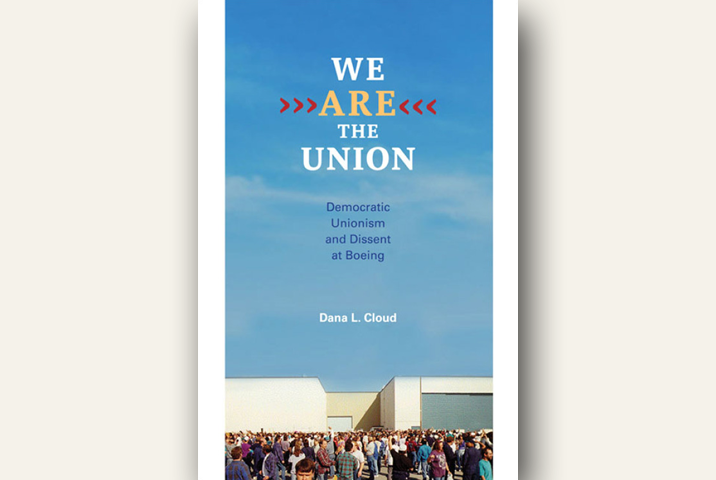
We Are the Union: Democratic Unionism and Dissent at Boeing
Dana L. Cloud
Urbana: University of Illinois Press, 2011
Dana L. Cloud engages union reformers at Boeing in Wichita and Seattle to reveal how ordinary workers attempted to take command of their futures by chipping away at the cozy partnership between union leadership and corporate management. Taking readers into the central dilemma of having to fight an institution while simultaneously using it as a bastion of basic self-defense, We Are the Union offers a sophisticated exploration of the structural opportunities and balance of forces at play in modern unions, told through a highly relevant case study.
Focusing on the 1995 strike at Boeing, Cloud renders a multi-layered account of the battles between the company and the union and within the union led by Unionists for Democratic Change and two other dissident groups. She gives voice to the company's claims of the hardships of competitiveness and the entrenched union leaders' calls for concessions in the name of job security, alongside the democratic union reformers' fight for a rank-and-file upsurge against both the company and the union leaders.
We Are the Union is grounded in on-site research and interviews and focuses on the efforts by Unionists for Democratic Change to reform unions from within. Incorporating theory and methods from the fields of organizational communication as well as labor studies, Cloud methodically uncovers and analyzes the goals, strategies, and dilemmas of the dissidents who, while wanting to uphold the ideas and ideals of the union, took up the gauntlet to make it more responsive to workers and less conciliatory toward management, especially in times of economic stress or crisis. Cloud calls for a revival of militant unionism as a response to union leaders' embracing of management and training programs that put workers in the same camp as management, arguing that reform groups should look to the emergence of powerful industrial unions in the United States for guidance on revolutionizing existing institutions and building new ones that truly accommodate workers' needs. Drawing from communication studies, labor history, and oral history and including a chapter co-written with Boeing worker Keith Thomas, We Are the Union contextualizes what happened at Boeing as an exemplar of agency that speaks to both the past and the future.
Writing in Labour/Le Travail, Duke University's Michael Stauch calls We Are the Union a "valuable contribution to the growing literature on the conflict between union officials and workers they purport to represent." The review in the Journal of American History notes that "Cloud poignantly portrays the exhausting costs of activism—personal, financial, and political," while labor historian Peter Rachleff concludes that We Are the Union "raises vital, critical questions [and] will be a widely read and passionately contested contribution to contemporary labor history."
Dana L. Cloud is Associate Professor in the Department of Communication Studies at the University of Texas. Cloud’s research interests lie in the areas of rhetoric and social movements, critique of representations of race and gender in the mass media, and the defense of historical materialist theory and method in communication studies. Her work has appeared in Communication and Critical/Cultural Studies, the Quarterly Journal of Speech,Critical Studies in Media Communication, Rhetoric & Public Affairs, and the Western Journal of Communication. Among other awards, Cloud is a recipient of the National Communication Association's Karl Wallace Memorial Award.
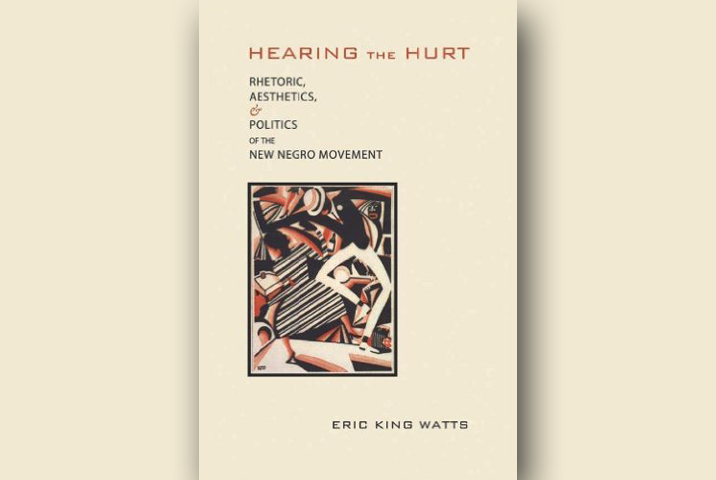
Hearing the Hurt: Rhetoric, Aesthetics, and Politics of the New Negro Movement
Eric King Watts
Tuscaloosa: University of Alabama Press, 2012
Hearing the Hurt is an examination of how the New Negro movement, also known as the Harlem Renaissance, provoked and sustained public discourse and deliberation about black culture and identity in the early twentieth century.
Borrowing its title from a W. E. B. Du Bois essay, Hearing the Hurt explores the nature of rhetorical invention, performance, and mutation by focusing on the multifaceted issues brought forth in the New Negro movement, which Watts treats as a rhetorical struggle over what it means to be properly black and at the same time properly American. Who determines the meaning of blackness? How should African Americans fit in with American public culture? In what way should black communities and families be structured? The New Negro movement animated dynamic tension among diverse characterizations of African American civil rights, intellectual life, and well-being, and thus it provides a fascinating and complex stage on which to study how ideologies clash with each other to become accepted universally.
Watts, conceptualizing the artistic culture of the time as directly affected by the New Negro public discourse, maps this rhetorical struggle onto the realm of aesthetics and discusses some key incarnations of New Negro rhetoric in select speeches, essays, and novels.
Noting that Watts' book has "great strengths," the review in Research & Reference Book News highlights how Watts "quietly notes that American ideas of color, race, sexuality, and power are deeply connected, and we can't talk productively about the New Negro movement until we accept that many of its artists and thinkers were both black and gay/lesbian/bisexual. It is okay to say so, and it is both possible and necessary to talk about those things together. He [Watts] gives us one good model of what it looks like to do that." CallingHearing the Hurt a "fine achievement in a scholarly landscape focused on fiercely-defended single-issue categories," this review concludes that the books is "a valuable one for scholars and students of African-American culture, 20th century art, rhetoric, or identity studies from any perspective." Robert Terrill, the author ofMalcolm X: Inventing Radical Judgment, notes that Watts's book "attends to a significant historical movement that is woefully understudied among rhetorical critics." Watts's "intensity is palpable," Terrill continues, and "his textual analyses are insightful, and his sometimes lyrical turns of phrase both enliven his arguments and invite the reader to share his commitment to the material.”
Eric King Watts is Associate Professor in the Department of Communication Studies at the University of North Carolina. Watts has also taught at the University of Dayton and Wake Forest University. A former editor of Critical Studies in Media Communication, Watts received the New Investigator Award from the NCA Rhetorical and Communication Theory Division in 2002, and the 2002 Outstanding Journal Article Award and the 2004 Outstanding Book Chapter Award from the African American Communication & Culture Division of NCA.
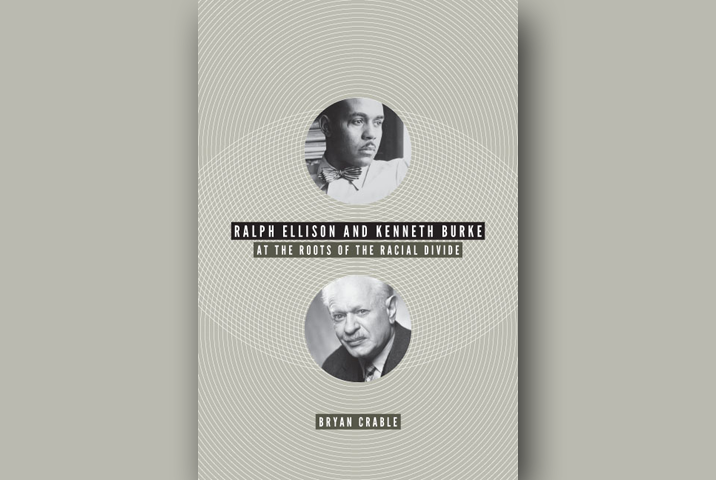
Ralph Ellison and Kenneth Burke: At the Roots of the Racial Divide
Bryan Crable
Charlottesville: University of Virginia Press, 2012
Ralph Ellison and Kenneth Burke focuses on the little-known but important friendship between two canonical American writers. The story of this 50-year friendship, however, is more than literary biography; Bryan Crable (left) argues that the Burke-Ellison relationship can be interpreted as a microcosm of the American "racial divide." Through examination of published writings and unpublished correspondence, he reconstructs the dialogue between Burke and Ellison about race that shaped some of their most important works, including Burke's A Rhetoric of Motives and Ellison's Invisible Man. In addition, the book connects this dialogue to changes in American discourse about race. Crable shows that these two men were deeply connected, intellectually and personally, but that the social division between white and black Americans produced hesitation, embarrassment, mystery, and estrangement where Ellison and Burke might otherwise have found unity. By using Ellison’s nonfiction and Burke’s rhetorical theory to articulate a new vocabulary of race, the author concludes not with a simplistic "healing" of the divide, but with a challenge to embrace the responsibility inherent to our social order.
Penn State's Jack Selzer notes that Crable's work is "a scholarly work of exceptional depth." "It offers considerable and original insight into the work and careers of two of the most important cultural figures in America during the 20th century," Selzer writes, while it also illuminates a fundamental argument, "that the relationship between Ellison and Burke epitomizes the larger racial issue that lies at the heart of American culture." Ralph Ellison and Kenneth Burke is "Highly Recommended" by CHOICE.
Bryan Crable is Professor of Communication at Villanova University and the Founding Director of the Waterhouse Family Institute for the Study of Communication and Society. Crable is the only two-time winner of the Charles Kneupper Award for best article of the year from the Rhetoric Society of America (2003, 2009), and, for his scholarly and professional contributions to the discipline, was awarded the Kenneth Burke Society’s prestigious Lifetime Achievement Award in 2011. His essays have appeared in leading rhetoric and communication journals, including The Quarterly Journal of Speech, Rhetoric Society Quarterly, Rhetoric Review and Argumentation & Advocacy.
- University of Virginia Press
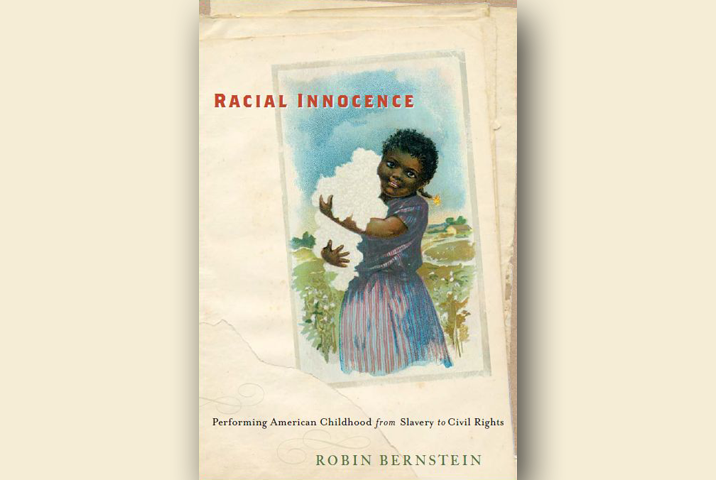
Racial Innocence: Performing American Childhood from Slavery to Civil Rights
Robin Bernstein
New York: New York University Press, 2012
Beginning in the mid-19th century in America, childhood became synonymous with innocence—a reversal of the previously-dominant Calvinist belief that children were depraved, sinful creatures. As the idea of childhood innocence took hold, it became racialized: popular culture constructed white children as innocent and vulnerable while excluding black youth from these qualities. Actors, writers, and visual artists then began pairing white children with African American adults and children, thus transferring the quality of innocence to a variety of racial-political projects—a dynamic that Robin Bernstein calls “racial innocence.” This phenomenon informed racial formation from the mid-19th century through the early 20th century.
Racial Innocence takes up a rich archive including books, toys, theatrical props, and domestic knickknacks which Bernstein analyzes as “scriptive things” that invite or prompt historically located practices while allowing for resistance and social improvisation. Integrating performance studies with literary and visual analysis, Bernstein offers singular readings of theatrical productions, from blackface minstrelsy to Uncle Tom’s Cabin to The Wonderful Wizard of Oz; literary works by Joel Chandler Harris, Harriet Wilson, and Frances Hodgson Burnett; material culture including Topsy pincushions, Uncle Tom and Little Eva handkerchiefs, and Raggedy Ann dolls; and visual texts ranging from fine portraiture to advertisements for lard substitute. Throughout, Bernstein shows how “innocence” gradually became the exclusive province of white children—until the Civil Rights Movement succeeded not only in legally desegregating public spaces, but in culturally desegregating the concept of childhood itself.
Writing in Children’s Literature, Philip Nel notes that Racial Innocence is “one of those rare books that shifts the paradigm—a book that, in years to come, will be recognized as a landmark in children’s literature and childhood studies.” In the journal Cultural Studies, reviewer Aaron C. Thomas says that Bernstein’s “theory of the scriptive thing asks us to see children as active participants in culture, and, in fact, as expert agents of the culture of childhood into which they have been interpellated. In this way, Bernstein is able not only to describe the effects of 19th-century radicalization on 21st century US culture, but also to illuminate the radicalized residues of our own childhoods in our everyday adult lives.” Racial Innocence was awarded the 2012 Outstanding Book Award from the Association for Theatre in Higher Education, and the award committee noted that the book “is a historiographic tour de force that traces a genealogy of the invention of the innocent (white) child and its racialized roots in 19th and 20th century U.S. popular culture.”
Robin Bernstein is a cultural historian who specializes in U.S. performance and theatre from the 19th century to the present. Her interests include formations of race, age, gender, and sexuality, and her research integrates the study of theatrical, visual, material, and literary evidence. A graduate of Yale's doctoral program in American Studies, Bernstein is an Associate Professor of African and African American Studies and of Studies of Women, Gender, and Sexuality at Harvard University where she is also a faculty member in the doctoral program in the History of American Civilization.
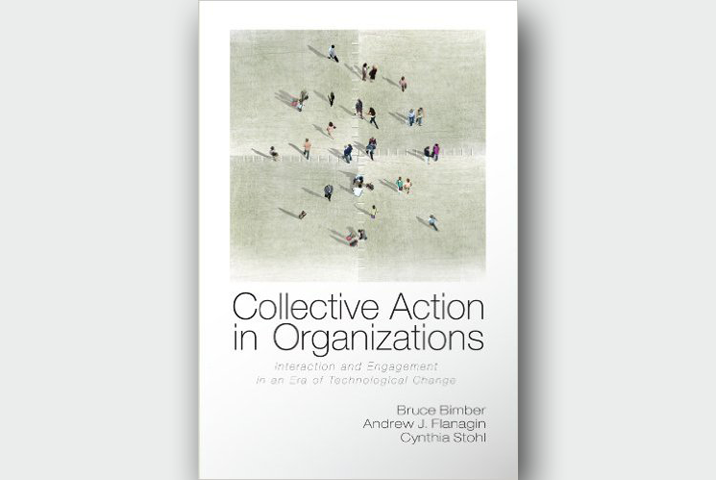
Collective Action in Organizations: Interaction and Engagement in an Era of Technological Change
Bruce Bimber, Andrew Flanagin, & Cynthia Stohl
Cambridge: Cambridge University Press, 2012
Challenging the notion that digital media render traditional, formal organizations irrelevant,Collective Action in Organizations offers a new theory of collective action and organizing. Based on extensive surveys and interviews with members of three influential and distinctive organizations in the United States - The American Legion, AARP, and MoveOn - the authors reconceptualize collective action as a phenomenon in which technology enhances people's ability to cross boundaries in order to interact with one another and engage with organizations.
By developing a theory of Collective Action Space, Bimber, Flanagin, and Stohl explore how people's attitudes, behaviors, motivations, goals, and digital media use are related to their organizational involvement. They find that using technology does not necessarily make people more likely to act collectively, but contributes to a diversity of "participatory styles," which hinge on people's interaction with one another and the extent to which they shape organizational agendas. In the digital media age, organizations do not simply recruit people into roles; they provide contexts in which people are able to construct their own collective experiences.
Peter Monge, of USC’s Annenberg School of Communication and Marshall School of Business, writes thatCollective Action in Organizations “combines solid, new theorizing with crisp, well-executed data analysis.” “The results are surprising,” Monge concludes, noting that scholars with various interests “will find Collective Action in Organizations a thought-provoking and idea-generating experience.” The University of Illinois’s Marshall Scott Poole calls the book a “pathbreaking analysis,” and Michael Delli Carpini from Penn’s Annenberg School of Communication labels the book “a major contribution to both our empirical understanding of and our theorizing about civic and political engagement in the new information age.”
Bruce Bimber is Professor of Political Science at the University of California, Santa Barbara, where he is also affiliated with the Department of Communication, and is founder and former Director of the Center for Information Technology and Society. His interest in digital media and society arises from his training as an electrical engineer and from many years of observing the interconnections between social and technological innovation. Andrew J. Flanagin is Professor of Communication at the University of California, Santa Barbara, where he is also Director of the Center for Information Technology and Society. His research focuses on processes of collective organizing, particularly as influenced by the use of contemporary technologies; people's perceptions of the credibility of information gathered and presented online; the use of social media and social metadata for information sharing and assessment; and organizational technologies. Cynthia Stohl is Professor of Communication at the University of California, Santa Barbara, and an affiliate faculty member of the Center for Information Technology and Society. Her work focuses on organizing and network processes across a wide range of global contexts, including workplace participation programs, corporate NGO partnerships, activist organizing, and clandestine organizations.
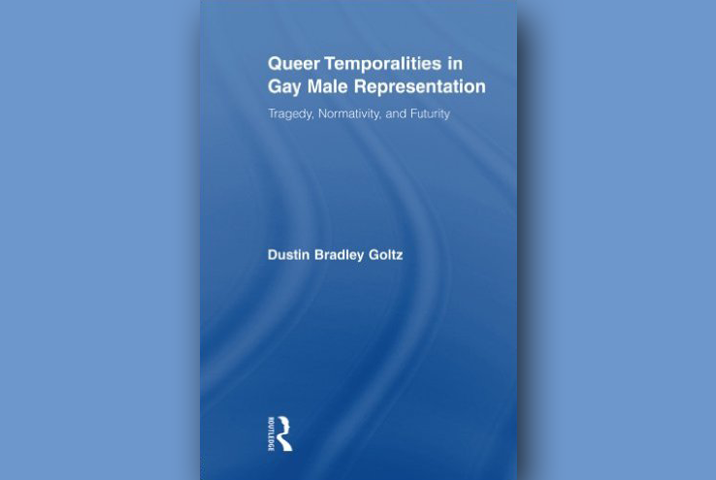
Queer Temporalities in Gay Male Representation: Tragedy, Normativity, and Futurity
Dustin Bradley Goltz
New York: Routledge, 2010
Through the analysis of more than 70 films and 30 television series, ranging from Shortbus, Sweet Home Alabama, and Poseidon to Noah’s Arc, Brothers & Sisters, and Dawson’s Creek, Dustin Bradley Goltz examines recurring narrative structures in popular media that perpetuate the extreme value placed upon "young" gay male bodies, while devaluing health, aging, and longevity. Alienated from the future–outside of limited and exclusionary systems of marriage and procreation—the gay male is narrated within a circular tragedy that draws upon cultural mythologies of "older" gay male predation, the absence of gay intergenerational mentorship, and the gay male as sacrificial victim.
Using a Burkean framework, Goltz makes a theoretical, rhetorical, and cultural investigation of how the increased visibility of “positive” gay representation in dominant media shapes contemporary meanings of gay aging, heteronormative future, homonormative future, and queer potential.
The research at the foundation of Queer Temporalities in Gay Male Representation formed the basis of a full-scale multimedia performance project called Blasphemies on Forever: Remembering Queer Futures, recently published in Liminalities. Blasphemies on Forever: Remembering Queer Futures was written, directed and performed by Goltz and also features Jason Zingsheim, Assistant Professor in the Department of Communication at Governors State University. The performance premiered at DePaul University in the Spring of 2009. It was also presented at Davenport's Piano Bar in Chicago in September 2009 and The Empty Space Theater at Arizona State University in March 2010. The performance documentation was recorded in November 2009, at DePaul University, as part of the National Communication Association Performance Series. The documentation was recorded by Rae Langes and edited by Dustin Goltz.
Dustin Bradley Goltz is Assistant Professor in the College of Communication at DePaul University where he teaches courses in performance of literature, performance for social change, and the rhetoric of popular culture, with additional interests in gender and communication, rhetorical methods, queer theory, critical theory, and cultural studies. His research examines and explores issues of queer temporalities and futurity, queer popular culture, the performance of personal narrative, the rhetoric of gay male aging, and performative research methods. Goltz’s research has been published in Text & Performance Quarterly, Genders,Liminalities, Western Journal of Communication, Critical Studies in Media Communication, Review of Education, Pedagogy, and Cultural Studies and Qualitative Inquiry.
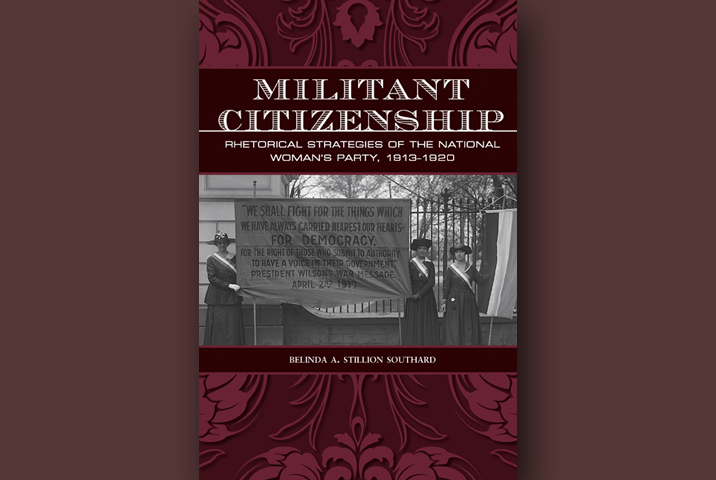
Militant Citizenship: Rhetorical Strategies of the National Woman’s Party, 1913-1920
Belinda Stillion Southard
College Station: Texas A&M University Press, 2011
Between 1913 and 1920, the National Woman’s Party (NWP) waged a campaign to write women’s voting rights into the U.S. Constitution. Unlike the more moderate campaign strategies adopted by other woman suffrage organizations of the Progressive Era, the NWP remained committed to militant agitation—that is, holding political party leaders responsible for social change and doing so through nontraditional means of protest. Some of these militant strategies included heckling President Wilson, protesting silently outside the White House gates, and publicly burning his speeches in “Watch Fires.”
In light of the NWP’s militant identity and its demonstrated political viability, Belinda A. Stillion Southard treats the party’s campaign for woman suffrage as an example of how a relatively powerless group of women constituted themselves as “national citizens” through rhetoric. To this end, she uses volumes of NWP discourse, including correspondence, photographs, protests, and publications, to situate the NWP in the historical and ideological forces of the period, particularly as they are inflected by meanings of nationalism, citizenship, and social activism. In addition to the project’s historical focus, this study features the critical concept of political mimesis to help explain the ways in which the NWP mimicked political rhetorics and rituals to simultaneously agitate and accommodate members of the political elite.
Militant Citizenship received an honorable mention designation for the 2012 Winifred Bryan Horner Outstanding Book Award, presented by the Coalition of Women Scholars in the History of Rhetoric and Composition. Writing in the American Historical Review, Ruth Crocker notes that “Southard’s [sic] study focusing on the rhetoric as well as the enactment of protest adds an important dimension to our appreciation of the more radical wing of the woman suffrage movement. This monograph demonstrates the rich possibilities of approaching social movement history not only through an analysis of the rhetoric of public addresses, but also through the interpretive lens of visual culture.” Rhetorical scholar Cheryl Jorgensen-Earp remarks that “Stillion Southard has produced a well-argued study of depth and nuance that transforms our understanding of militancy, the National Woman's Party, and the broader strategy of political mimesis.”
Belinda Stillion Southard is Assistant Professor in the Department of Communication Studies at the University of Georgia. She studies rhetorical criticism, U.S. public address, and women’s discourse. While her research and teaching interests are grounded in the public address tradition, they are also guided by questions regarding the processes of identity-formation amidst political and social movements. Dr. Stillion Southard’s work has appeared in theRhetoric & Public Affairs, Communication Quarterly and elsewhere.
- Texas A&M University Press
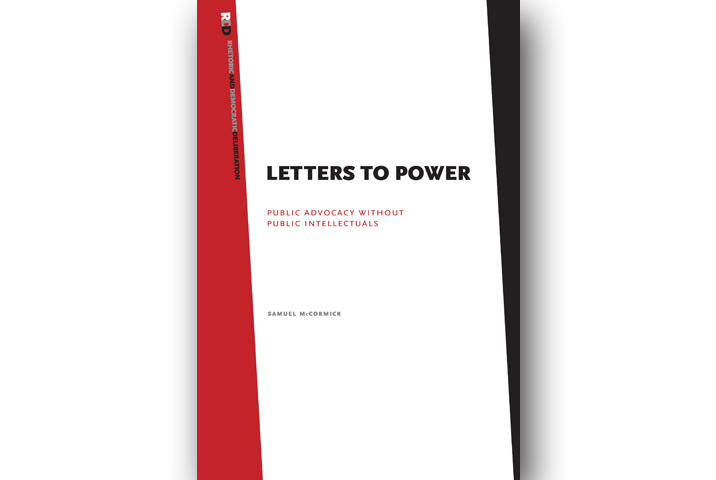
Letters to Power: Public Advocacy without Public Intellectuals
Samuel McCormick
University Park: Penn State University Press, 2011
Although the scarcity of public intellectuals among today’s academic professionals is certainly a cause for concern, it also serves as a challenge to explore alternative, more subtle forms of political intelligence. Samuel McCormick’s Letters to Power accepts this challenge, guiding readers through ancient, medieval, and modern traditions of learned advocacy in search of persuasive techniques, resistant practices, and ethical sensibilities for use in contemporary democratic public culture.
At the center of Letters to Power are the political epistles of four renowned scholars: the Roman Stoic Seneca the Younger, the late-medieval feminist Christine de Pizan, the key Enlightenment thinker Immanuel Kant, and the Christian anti-philosopher Søren Kierkegaard. Anticipating much of today’s online advocacy, their letter writing helps would-be intellectuals understand the economy of personal and public address at work in contemporary relations of power, suggesting that the art of lettered protest, like letter writing itself, involves appealing to diverse, and often strictly virtual, audiences. In this sense, Letters to Power is not only a nuanced historical study, but also a book in search of a usable past.
In 2012, McCormick received the Everett Lee Hunt Award (given to a work that offers a “major contribution to the understanding of rhetoric and communication as a human function in the contemporary world; a means of explaining and realizing public responsibilities beyond the discipline of communication; and/or an intellectual and humane instrument for merging diverse fields of knowledge in a way that infuses them with moral purpose and public significance”) from the Eastern Communication Association for Letters to Power.
Robert Hariman notes that Letters to Power’s “skillful readings provide numerous insights regarding the predicaments and strategies shaping learned advocacy. By focusing on things small and sly, [McCormick] shows how public culture can be improved by careful thinkers doing humble work.”
Samuel McCormick is Assistant Professor in the Brian Lamb School of Communication at Purdue University. He studies rhetoric and public advocacy, especially as these topics intersect with broader issues in communication and social theory, intellectual and cultural history, and contemporary American civic life. His work has appeared in the Quarterly Journal of Speech, Philosophy & Rhetoric, Advances in the History of Rhetoric, and elsewhere.

Scientific Characters: Rhetoric, Politics, and Trust in Breast Cancer Research
Lisa Keränen
Tuscaloosa: University of Alabama Press, 2010
Moving back and forth between news coverage, medical journals, letters to the editor, and oncology pamphlets, Lisa Keränen draws insights from rhetoric, literary studies, sociology, and science studies to analyze the roles of character in shaping the outcomes of the “Datagate” controversy, a scientific dispute that erupted after a 1994 Chicago Tribune headline: “Fraud in Breast Cancer Research: Doctor Lied on Data for Decade.” Throughout the scandal, debates about the character of surgeon and researcher Dr. Bernard Fisher and other key players endured, showing how scientific knowledge is shaped by perceptions of the personal temperament, trustworthiness, integrity, and transparency of those who produce it. As administrators, politicians, scientists, patients, journalists, and citizens attempted to make sense of what had happened, and to assess the integrity of the research, they raised questions, assigned blame, attributed responsibility, and reshaped the norms of scientific practice.
Scientific Characters thus addresses what happens when scientists, patients, and advocates are called to defend themselves in public concerning complex technical matters with direct implications for human life. In assessing the rhetoric that animated “Datagate,” Scientific Characters sheds light on the challenges faced by scientists and citizens as science becomes more bureaucratized, dispersed, and accountable to varied publics.
In 2011, Keränen received the Marie Hochmuth Nichols Award from the NCA Public Address Division forScientific Characters. Nicole Parker, in the New York Journal of Books, calls Scientific Characters “articulate, engaging, and insightful,” and Victor Vogel, the editor of Management of Patients at High Risk for Breast Cancer, says the book “captures all of [the] complexities,” of the case it analyzes and “does a great service,” to the research and health care communities that are concerned about breast cancer.
Lisa Keränen is Associate Professor and Director of Graduate Studies in the Department of Communication at the University of Colorado-Denver. She researches the interface between science, publics, and the state in biomedical controversies, end-of-life discourse, and the biodefense industry. Her research concerning rhetoric, medicine, bioethics, and terrorism has appeared in outlets such as Academic Medicine, Accountability in Research, Argumentation & Advocacy, the Communication Yearbook, Cultural Studies-Critical Methodologies,Journal of Applied Communication Research, Journal of Medical Humanities, Quarterly Journal of Speech,Rhetoric and Public Affairs, and the Western Journal of Communication. Keränen’s website features a useful discussion guide for classroom use of Scientific Characters.

Invoking the Invisible Hand: Social Security and the Privatization Debates
Robert Asen
East Lansing: Michigan State University Press, 2009
Robert Asen’s Invoking the Invisible Hand examines the rhetoric hiding beneath the debates over Social Security through careful scrutiny of contemporary debates over proposals to privatize this federal program. Asen argues that a rights-based rhetoric employed by Social Security's original supporters enabled advocates of privatization to align their proposals with the widely held belief that Social Security functions simply as a return on a worker's contributions and that it is not, in fact, a social insurance program. By analyzing major debates over a preeminent American institution, Asen reveals the ways in which language is deployed to identify problems for public policy, craft policy solutions, and promote policies to the populace. He shows how debate participants seek to create favorable contexts for their preferred policies and how they connect those policies to idealized images of the nation.
Invoking the Invisible Hand is a “rich and compelling work,” writes Melanie Loehwing in Rhetoric & Public Affairs. “The careful research, provocative analysis, and thoughtful insights Asen offers throughout the book distinguish it as an invaluable resource for scholars of public policy rhetorics,” Loehwing concludes. Internet Bookwatch said of Asen’s book: “Revealing the manner in which debate participants tend to manipulate language and perception to favor their side, Invoking the Invisible Hand is strongly recommended not only to college libraries, but also anyone involved in the Social Security debate, the better to fully understand all sides of the issue, and the fine details that advocates on each side tend to leave out.”
In 2010, Asen received the NCA Winans-Wichelns Memorial Award for Distinguished Scholarship in Rhetoric and Public Address, and the Marie Hochmuth Nichols Award from the NCA Public Address Division. And in 2011,Invoking the Invisible Hand received the Kohrs-Campbell Prize in Rhetorical Criticism, one of the largest awards ever established to sustain and advance the study of rhetoric in American higher education.
Robert Asen is Professor in the Department of Communication Arts at the University of Wisconsin-Madison. In addition to Invoking the Invisible Hand, Asen is the author of Visions of Poverty: Welfare Policy and Political Imagination (Michigan State University Press, 2002) and the co-editor of Public Modalities (University of Alabama Press, 2010) and Counterpublics and the State (SUNY Press, 2001).

Public Forgetting: The Rhetoric and Politics of Beginning Again
Bradford Vivian
University Park: Penn State University Press, 2010
Forgetting is usually juxtaposed with memory as its opposite in a negative way: It is seen as the loss of the ability to remember or, ironically, as the inevitable process of distortion or dissolution that accompanies attempts to commemorate the past. The civic emphasis on the crucial importance of preserving lessons from the past to prevent us from repeating mistakes that led to violence and injustice, invoked most poignantly in the call of “Never again” from Holocaust survivors, tends to promote a view of forgetting as verging on sin or irresponsibility. In this book, Bradford Vivian hopes to put a much more positive spin on forgetting by elucidating its constitutive role in the formation and transformation of public memory. Using examples ranging from classical rhetoric to contemporary crises such as 9/11, Public Forgetting demonstrates how, contrary to conventional wisdom, communities may adopt idioms of forgetting in order to create new and beneficial standards of public judgment concerning the lessons and responsibilities of their shared past.
In Rhetoric Society Quarterly, Greg Dickinson noted that “Vivian’s attention to the historical understandings of the relations of memory and forgetting ground his study while his astute textual readings of instances of public forgetting offer nuanced and textured elaborations of his theoretical concerns.”
“The signal contribution of Public Forgetting,” writes Katherine Mack in Rhetoric & Public Affairs, “is its reminder of the intimate relationship of remembrance and forgetting. Appeals to remember are simultaneously, implicitly or explicitly, appeals to forget (and vice versa). By inviting readers to adopt this more complex appreciation of their interplay, Vivian sets a new critical standard for future scholarship in the field.”
In 2011, Vivian received the National Communication Association's Winans-Wichelns Memorial Award for Distinguished Scholarship in Rhetoric and Public Address for Public Forgetting.
Bradford Vivian is an Associate Professor in the Department of Communication and Rhetorical Studies at Syracuse University. In addition to Public Forgetting, Vivian is the author of Being Made Strange: Rhetoric Beyond Representation (SUNY Press, 2004) and the co-editor of Rhetoric, Remembrance, and Visual Form: Sighting Memory (Routledge, 2012).
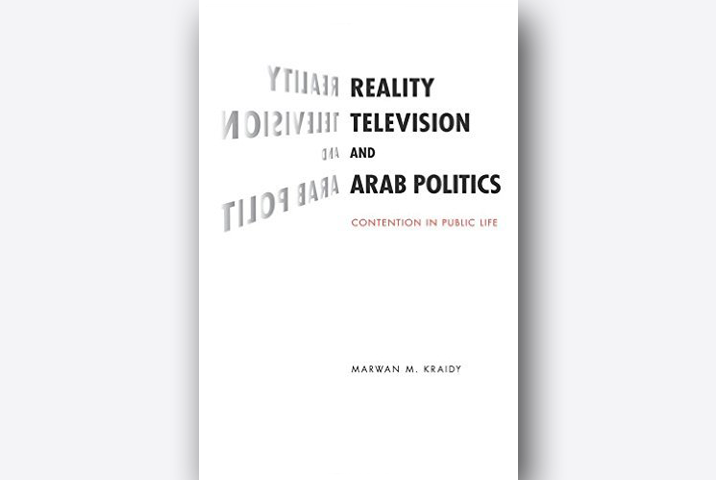
Reality Television and Arab Politics: Contention in Public Life
Marwan Kraidy
Cambridge, UK: Cambridge University Press, 2010
What does it mean to be modern outside the West? Based on a wealth of primary data collected over five years, Reality Television and Arab Politics, by the University of Pennsylvania’s Marwan M. Kraidy, analyzes how reality television stirred an explosive mix of religion, politics, and sexuality, fueling heated polemics over cultural authenticity, gender relations, and political participation in the Arab world. The controversies, Kraidy argues, are best understood as a social laboratory in which actors experiment with various forms of modernity, continuing a long-standing Arab preoccupation with specifying terms of engagement with Western modernity. Women and youth take center stage in this process. Against the backdrop of dramatic upheaval in the Middle East, this book challenges the notion of a monolithic “Arab Street” and offers an original perspective on Arab media, shifting attention away from a narrow focus on al-Jazeera toward a vibrant media sphere that compels broad popular engagement and contentious political performance.
Writing in Political Communication, Paddy Scannell called Reality Television and Arab Politics a “pioneering study of the impact of Arab RTV entertainment genres,” that “is an important contribution to our understanding of the global impact of media and communication.” The book, Scannell concludes, “deserves the widest possible readership across the humanities and social sciences." Reality Television and Arab Politics received the 2011 Diamond Anniversary Book Award from the National Communication Association.
Marwan M. Kraidy is Professor at the Annenberg School for Communication at the University of Pennsylvania. A scholar of global communication and an expert on Arab media and politics, Kraidy was previously a Fellow at the Woodrow Wilson International Center for Scholars and the founding director of the Arab Media and Public Life (AMPLE) project at American University.

